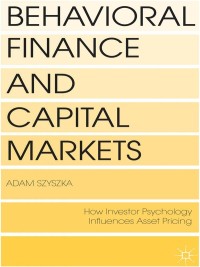I only do need answers on 7-5, 7-7, 7-9

Intermediate Problems 5-14 7-5 BOND VALUATION An investor has two bonds in his portfolio that have a face value of $1,000 and pay a 10% annual coupon. Bond L. matures in 15 years, while Bond S matures in 1 year. a. What will the value of each bond be if the going interest rate is 5%, 8% and 12%? Assume that only one more interest payment is to be made on Bond S at its maturity and that 15 more payments are to be made on Bond L. b. Why does the longer-term bond's price vary more than the price of the shorter-term bond when interest rates change? BOND VALUATION An investor has two bonds in her portfolio, Bond C and Bond Z. Each bond matures in 4 years, has a face value of $1.000, and has a yield to maturity of 9.6% Bond C pays a 10% annual coupon, while Bond Z is a zero coupon bond. 4. Assuming that the yield to maturity of each bond remains at 9.6% over the next 4 years, calculate the price of the bonds at each of the following years to maturity: Years to Maturity Price of Bond Price of Bond z 7-6 2 b. Plot the time path of prices for each bond. 7.7 INTEREST RATE SENSITIVITY An investor purchased the following 5 bonds Each bond had a par value of $1,000 and an 8% yield to maturity on the purchaseday. Immediately after the investor purchased them, interest rates fell, and each then had a new YTM of 7%. What is the percentage change in price for cach bond after the decline in interest rates? Fill in the following table Price 28% Price 7% Percentage Change 10 year, 10% annual coupon 10 year zero 5-year zero 30 year zero $100 perpetuity 7-8 YIELD TO CALL Six years ago the Singleton Company issued 20-year bonds with a 14% annual coupon rate at their $1,000 par value. The bonds had a 9% call premium, with 5 years of call protection. Today Singleton called the bonds. Compute the realized rate of return for an investor who purchased the bonds when they were issued and held them until they were called. Explain why the investor should or should not be happy that Singleton called them. 7-9 YIELD TO MATURITY Heymann Company bonds have 4 years left to maturity. Interest is paid annually, and the bonds have a $1,060 par value and a coupon rate of 9% a. What is the yield to maturity at a current market price of (1) $829 and (2) $1,104? b. Would you pay $829 for each bond if you thought that a "fair" market interest rate for such bonds was 12% that is, if ra -12%? Explain your answer. 7-10 CURRENT YIELD, CAPITAL GAINS YIELD, AND YIELD TO MATURITY Hooper Printing Inc. has bonds outstanding with 9 years left to maturity. The bonds have an 8% annual coupon rate and were issued 1 year ago at their par value of $1.000 However, due to changes in interest rates, the bond's market price has fallen to $901.40. The capital gains yield last year was -9.86% a. What is the yield to maturity? b. For the coming year, what are the expected current and capital gains yields? (Hint: Refer to footnote 7 for the definition of the current yield and to Table 7.1.) Will the actual realized yields be equal to the expected yields if interest rates change? If not, how will they differ? c









